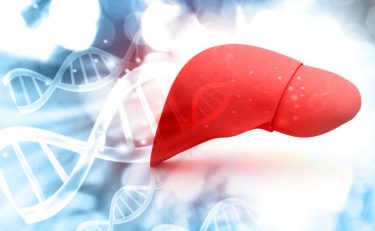
In 2022, Xenpozyme ® (olipudase alfa) became the first and only approved ASMD therapy. Enzyme replacement therapy Xenpozyme has been evaluated in children and adults to treat non-central nervous system (CNS) manifestations of ASMD type A/B and type B. According to Sanofi, the treatment is “designed to replace deficient or defective acid sphingomyelinase (ASM), an enzyme that allows for the breakdown of the lipid sphingomyelin”.
“ASMD is a rare disorder affecting the breakdown of certain complex fats in the body,” explained Dr Robin Lachmann, Principal Investigator at the National Hospital for Neurology and Neurosurgery, following the dosing of the first patient in a Sanofi Genzyme Phase II/III trial of olipudase alfa.
“These gradually accumulate over time in organs such as the liver, spleen and lungs, leading to debilitating and life-threatening complications. There is a clear need for a new treatment option which could positively affect the lives of patients with ASMD,” Dr Lachmann continued.
What is the current treatment landscape for rare diseases? What is working well and what is lacking?
There are over 7,000 known rare diseases impacting ~300 million people globally. Since the first orphan drug legislation was passed over 40 years ago, the landscape has changed rapidly, and patients are benefiting more and more from breakthrough innovations emerging through this scientific revolution. However, while there is much promise, only five percent of those 7,000 rare conditions have an available treatment, underscoring the tremendous need for continued research and development. Given the heterogeneous nature of rare diseases, clinical research must move beyond just patient-centric approaches and instead truly integrate the patient into scientific discovery, ensuring inclusion of invaluable insights from those living with rare diseases every day.
Can you summarise some of the key trial data for Xenpozyme presented at the SSIEM 2024 conference?
Final trial results from the Phase II ASCEND-Peds trial and extension study…[showed] that children treated with Xenpozyme for four or more years experienced normalisation or improvements in key disease features such as liver and spleen volume, lung function, and growth without any new safety concerns”
Final trial results from the Phase II ASCEND-Peds trial and extension study were presented at the Society for the Study of Inborn Errors of Metabolism (SSIEM) Annual Symposium 2024.
These findings are especially encouraging, showing that children treated with Xenpozyme for four or more years experienced normalisation or improvements in key disease features such as liver and spleen volume, lung function, and growth without any new safety concerns. By addressing clinical manifestations early, these results suggest that Xenpozyme has the potential to redefine long-term outcomes for this vulnerable population. Therefore, Sanofi’s recent data on ASMD underscore the significant challenges faced by individuals with this condition. Clinical trials involving both adults and children have demonstrated that Xenpozyme is well tolerated and leads to improved disease outcomes.
What are the key challenges when developing an enzyme replacement therapy such as Xenpozyme (olipudase alfa)? What should the industry focus on to advance development of these treatments?
Developing innovative therapies always presents challenges. But these hurdles are particularly daunting in R&D for rare diseases like ASMD, which involve several obstacles, including the lack of disease knowledge. Often, scientific understanding of a rare disease evolves during therapeutic development. It can be difficult to identify and recruit patients as they are typically scattered across the world. There is also a greater risk of failure ― the scarcity of information available for a rare disease can lead to unpredictable clinical development outcomes. The future of rare disease innovation depends on the ability to effectively advance science within this highly complex R&D environment.
What other plans does Sanofi have regarding innovation in the rare disease treatment space?
Sanofi leverages over 40 years of R&D in rare lysosomal storage disorders (LSDs), which has enabled the development of first-ever medicines for five rare LSDs. Venglustat, an investigational oral glucosylceramide synthase inhibitor is currently in Phase III trials for Gaucher disease type 3 and Fabry disease.
About the interviewee
 Dr Alaa Hamed is the Global Head of Medical Affairs for Rare Disease at Sanofi and has been with Sanofi for more than 12 years. Dr Hamed has spearheaded the development of numerous innovative disease-specific clinical outcome assessments. Prior to joining the company, he held various positions in both academia and biotech in health economics and outcomes research, medical, clinical, regulatory, and health services research. Dr Hamed holds an MD from Cairo University and both a Master of Business Administration and Master of Public Health from Boston University.
Dr Alaa Hamed is the Global Head of Medical Affairs for Rare Disease at Sanofi and has been with Sanofi for more than 12 years. Dr Hamed has spearheaded the development of numerous innovative disease-specific clinical outcome assessments. Prior to joining the company, he held various positions in both academia and biotech in health economics and outcomes research, medical, clinical, regulatory, and health services research. Dr Hamed holds an MD from Cairo University and both a Master of Business Administration and Master of Public Health from Boston University.
The post Enzyme replacement therapy: improving outcomes in rare disease appeared first on European Pharmaceutical Review.

